Abstract
English-speaking subjects with little knowledge of the French language used a computerized flashcard program, Think Fast, to learn 16 English-French word pairs (intraverbals) by typing one word of the pair when presented with the other word as a textual stimulus. In Phase 1, half of the intraverbals were taught from French to English (FE-1) and half from English to French (EF-1). Then, in Phase 2, training continued with the stimulus and response items of each intraverbal reversed, i.e., cards previously in the FE-1 condition were trained from English to French (EF-2) and cards previously in the EF-1 condition were trained from French to English (FE-2). Feedback was provided throughout the experiment. Reversing the stimulus and response items in Phase 2 significantly reduced rate correct and accuracy scores for eight of the nine subjects. In Experiments 1 and 2, this effect was more pronounced for cards in the EF-2 condition; in Experiment 3, when the criterion for a “correct” response was more lenient, there was no consistent difference between cards in the EF-2 and FE-2 conditions. Symmetry, as indicated by accuracy scores on the first trial in Phase 2, was generally poor: eight of the nine subjects averaged only 29% correct when asked to respond to the reversed relations for the first time. We relate our paradigm and results to recent developments in fluency, verbal behavior, and stimulus equivalence, and provide directions for future research.
Full text
PDF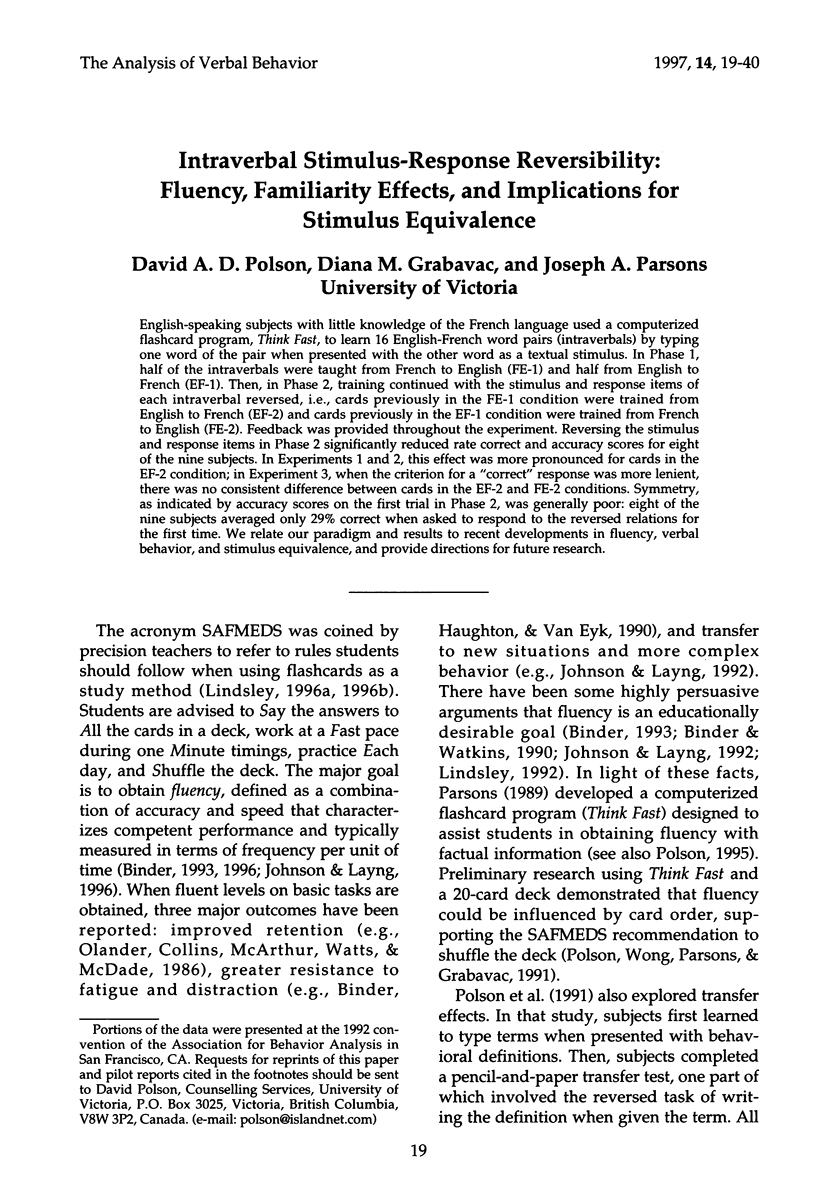
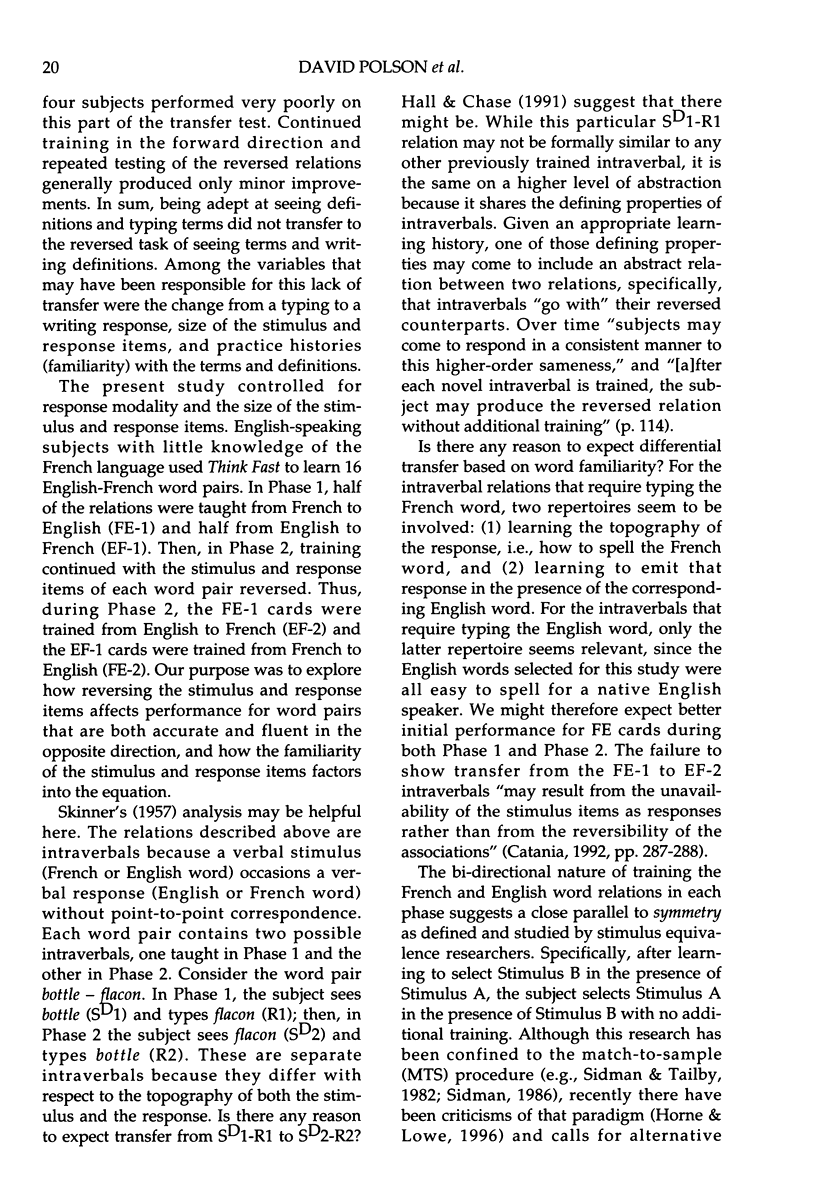
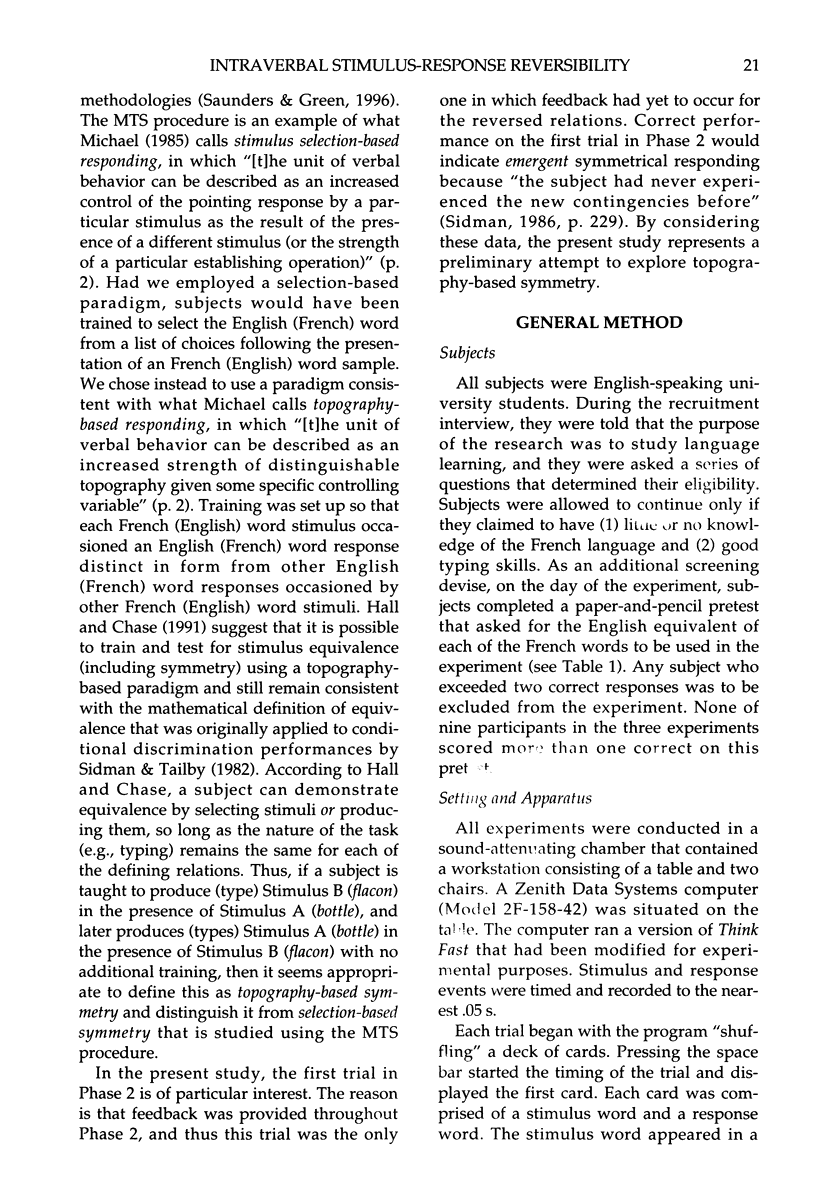
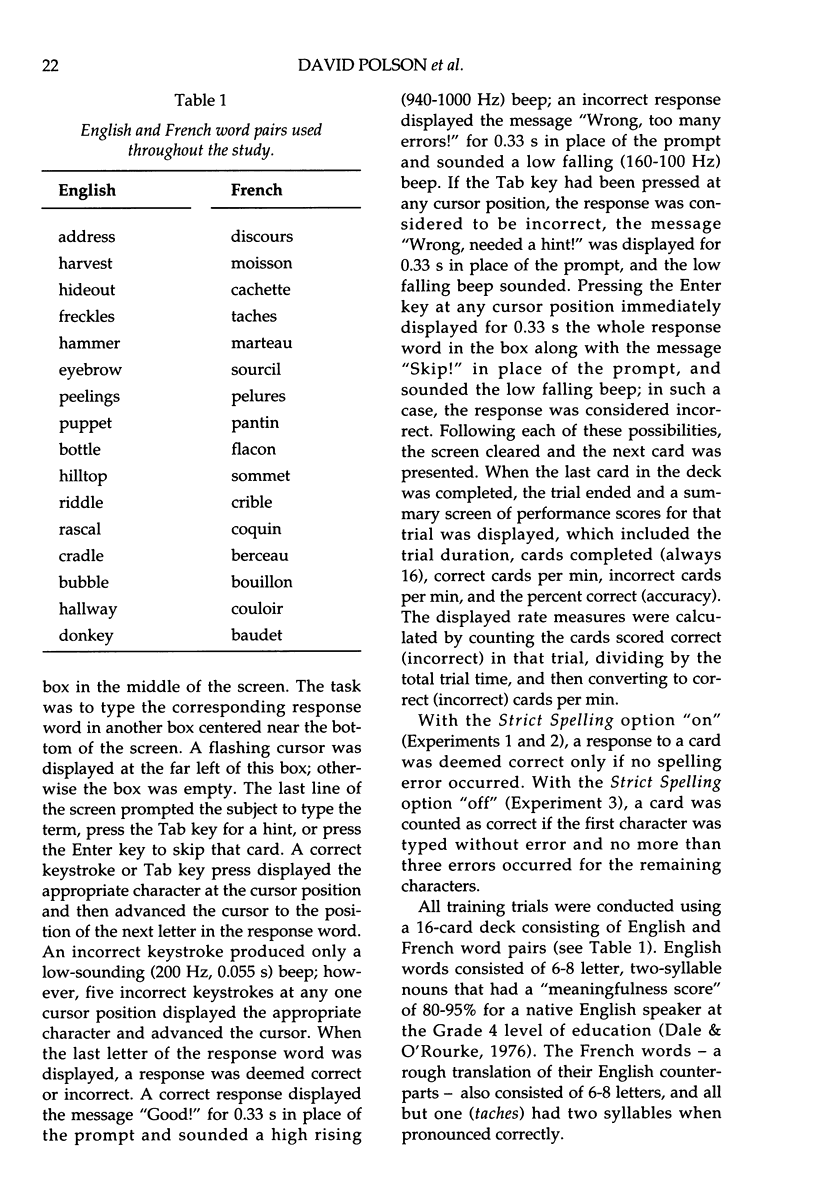

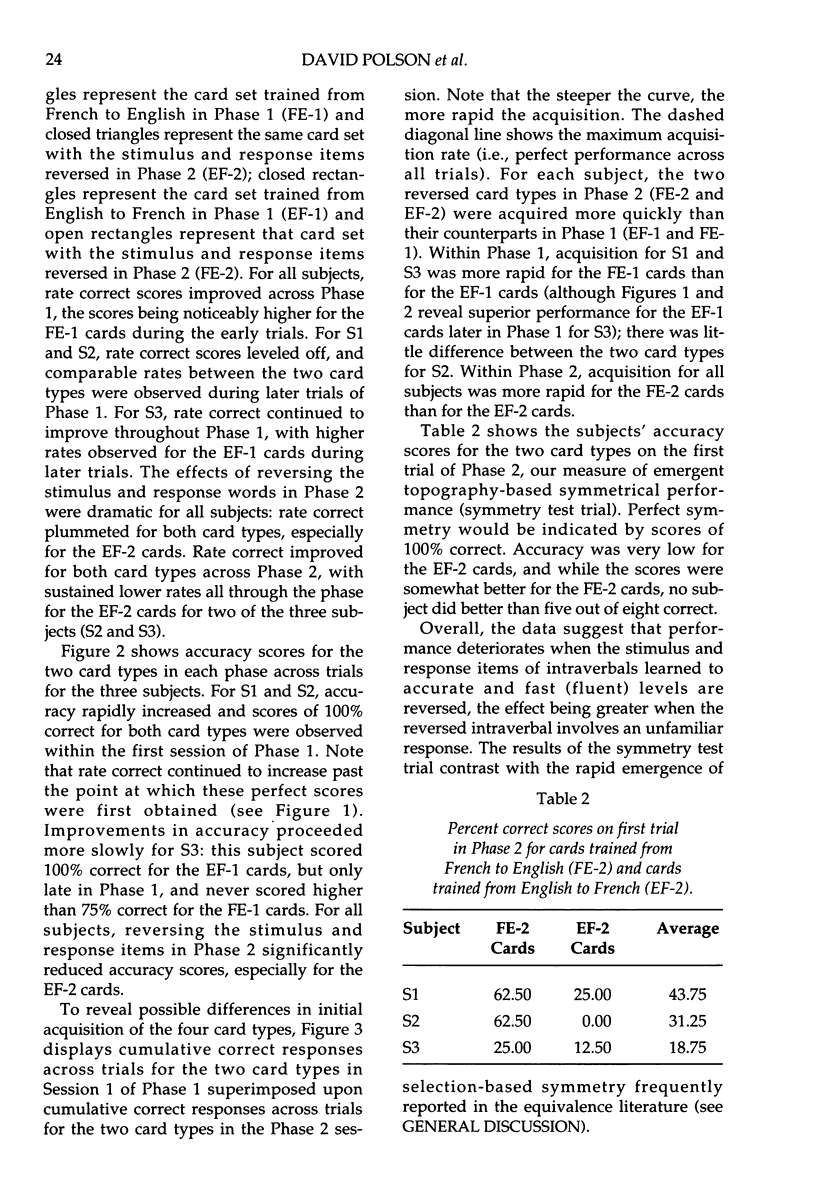
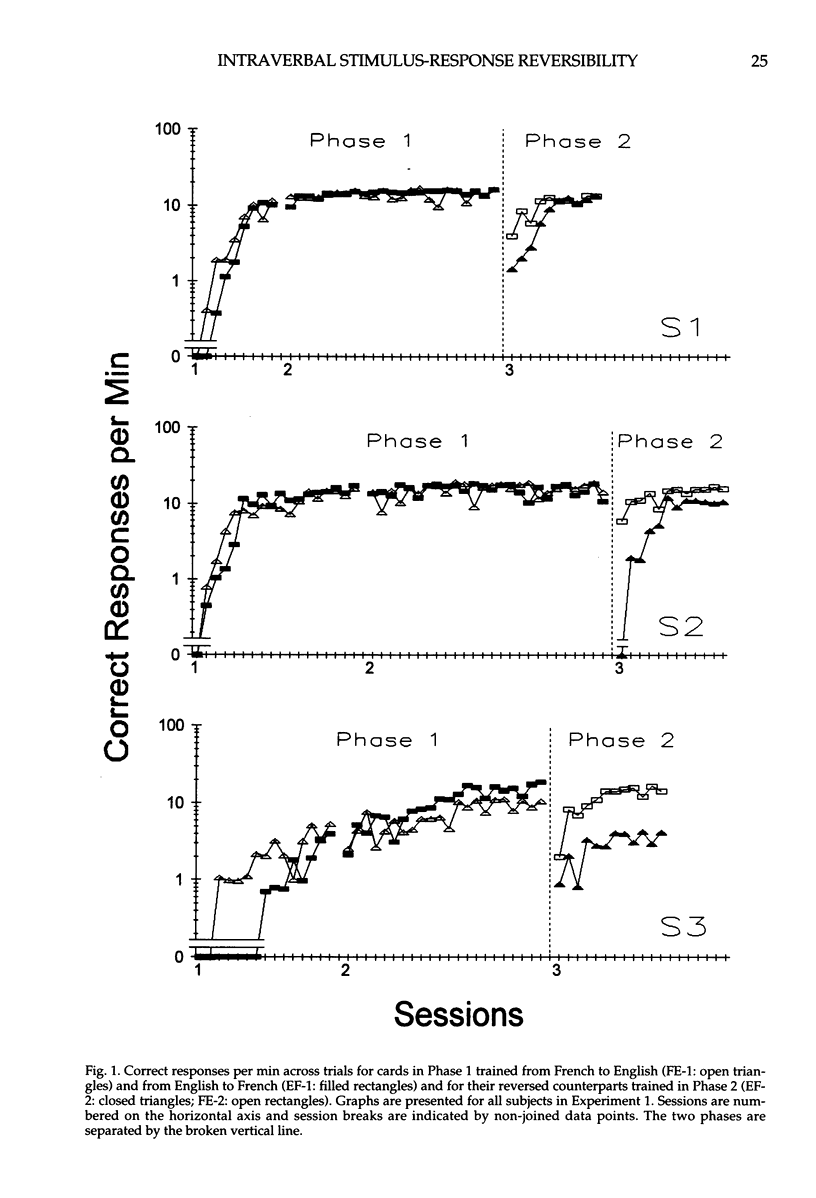
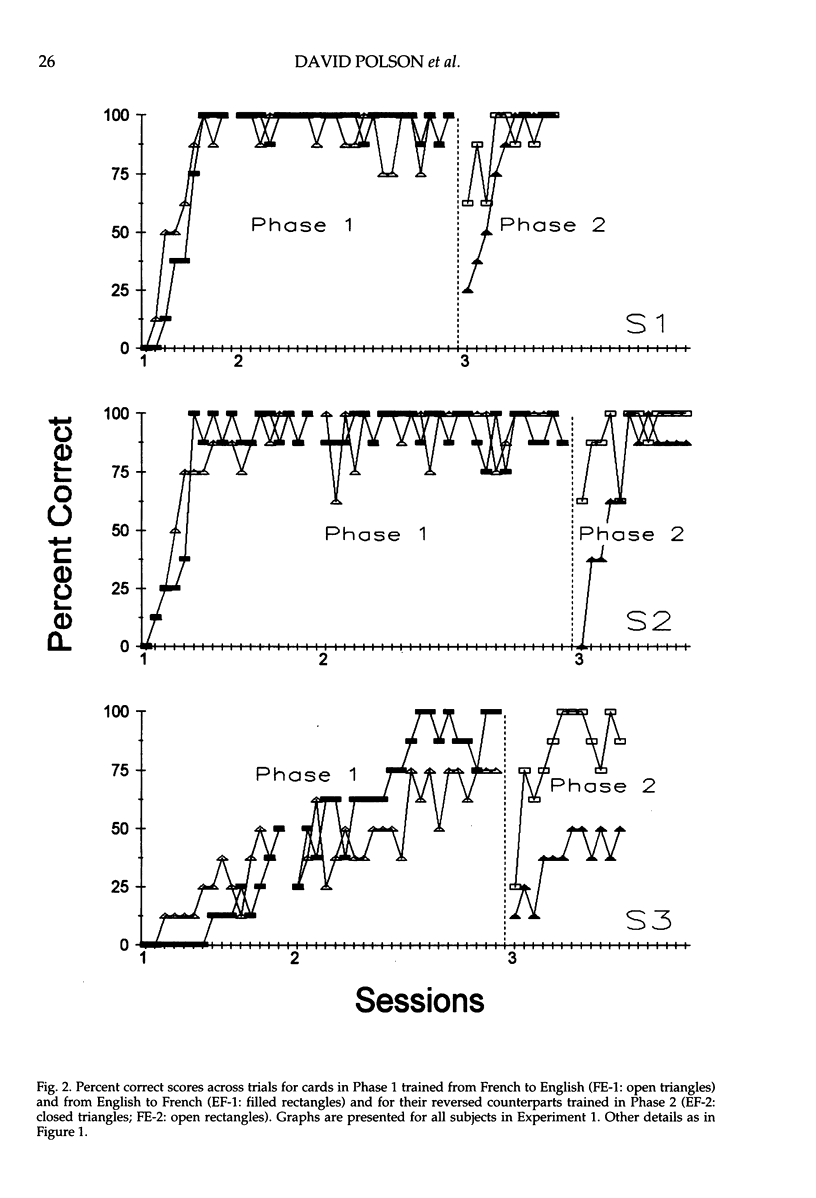
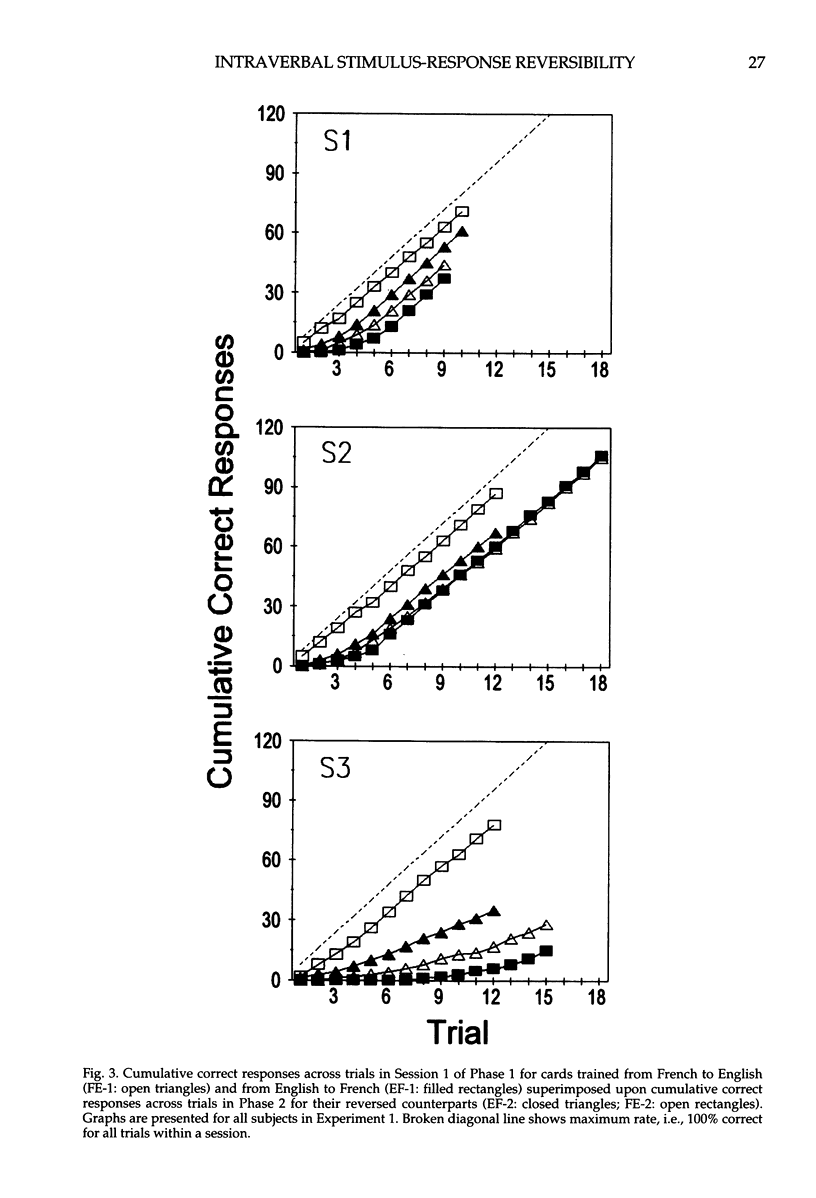
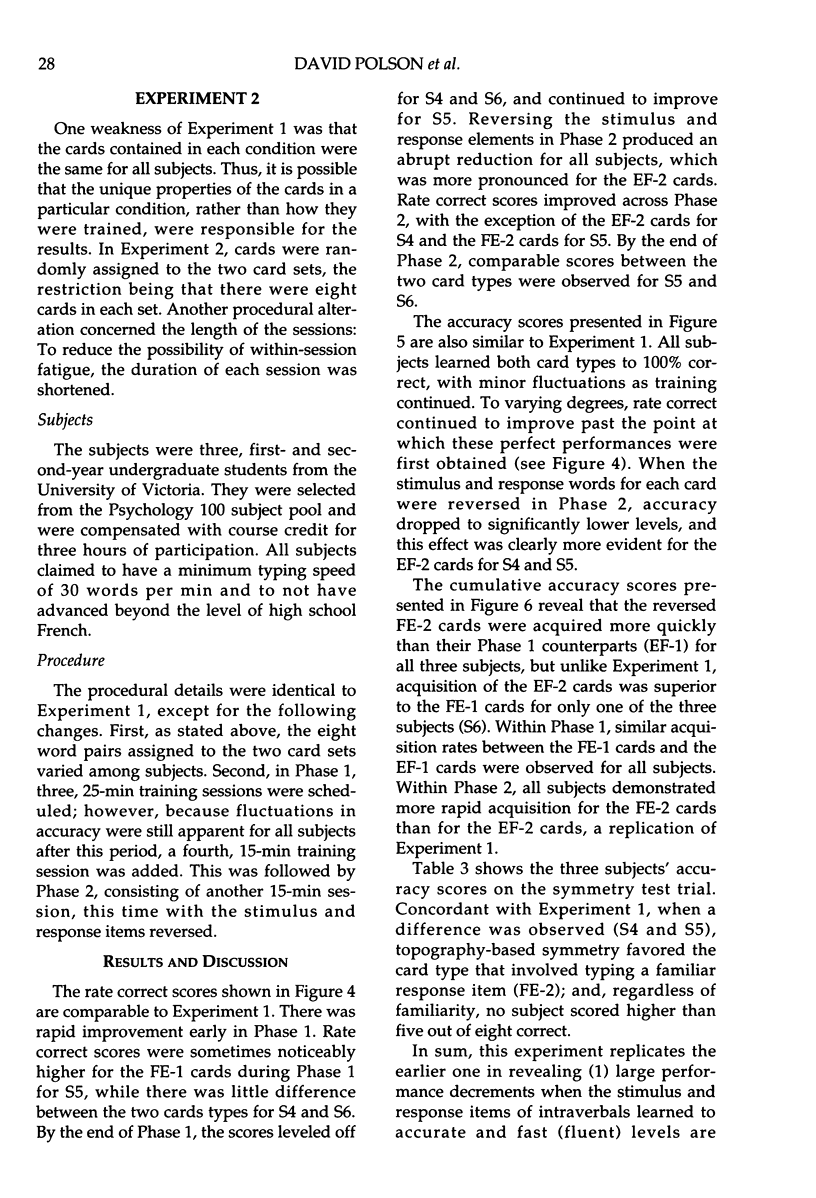
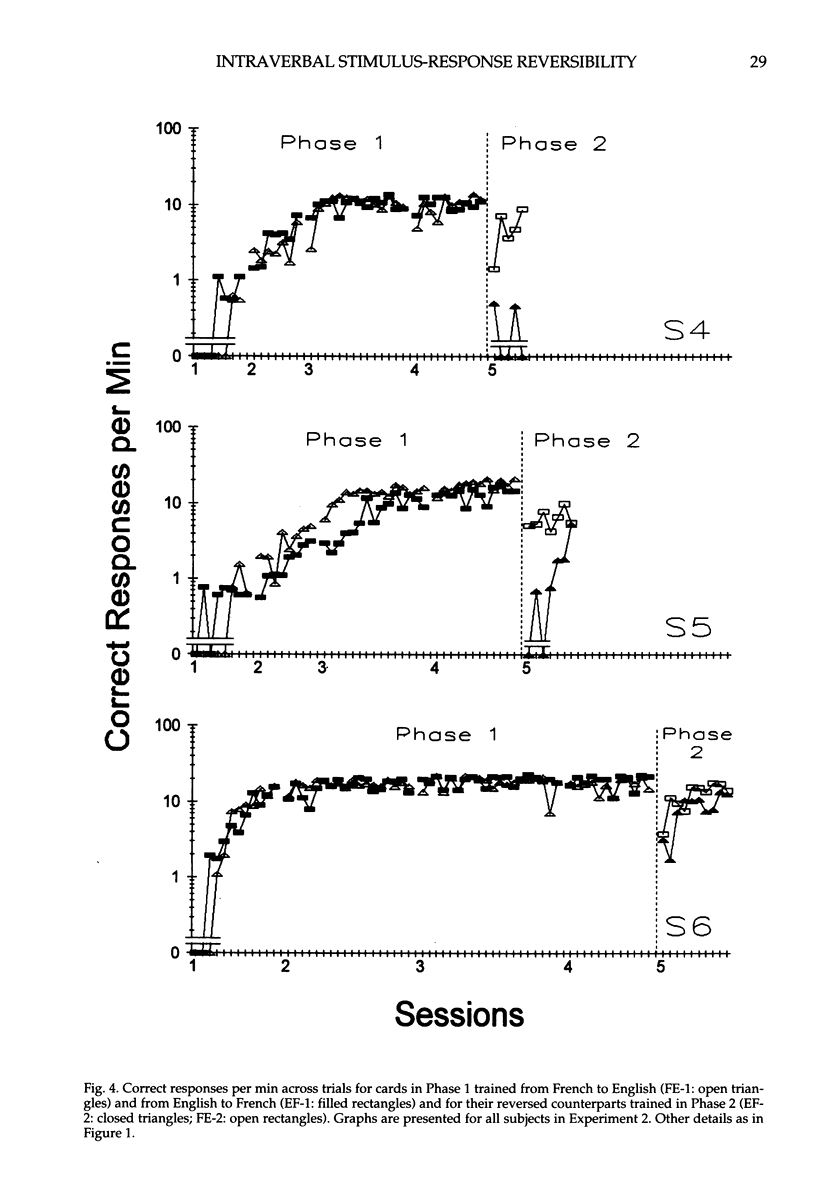
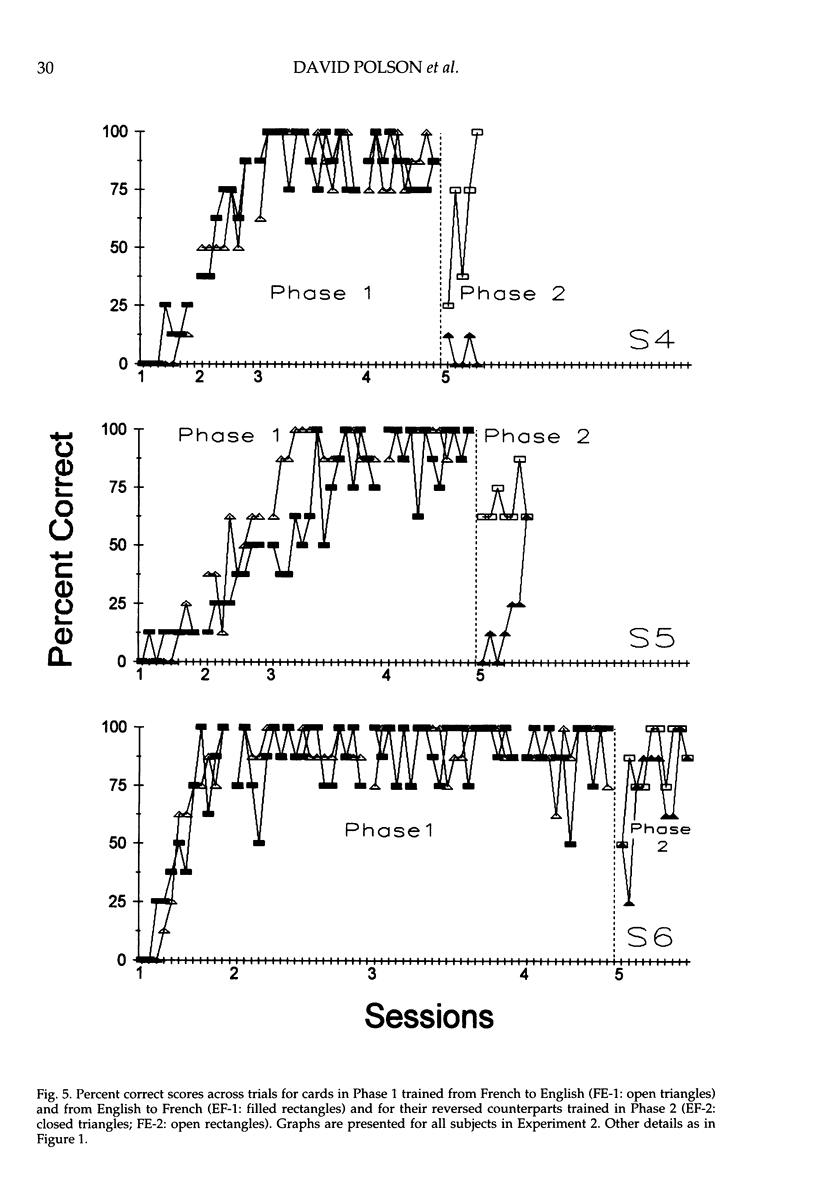
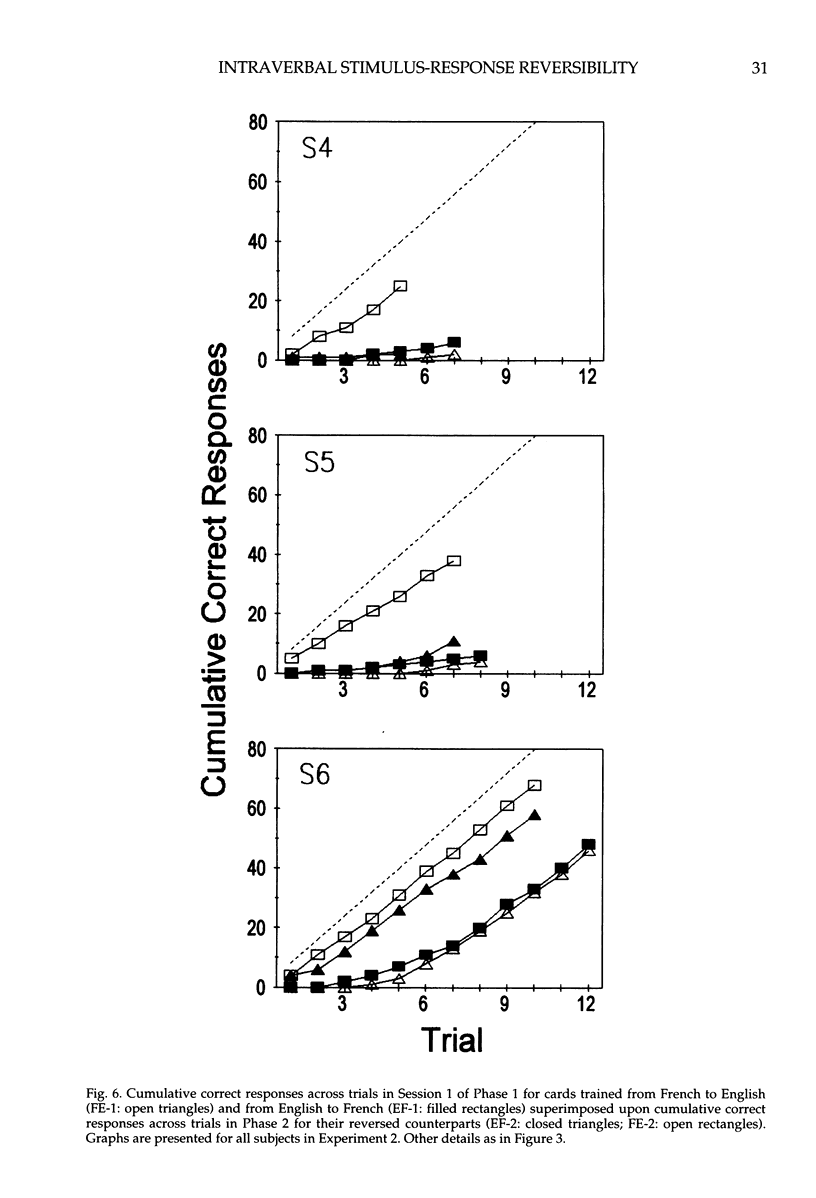
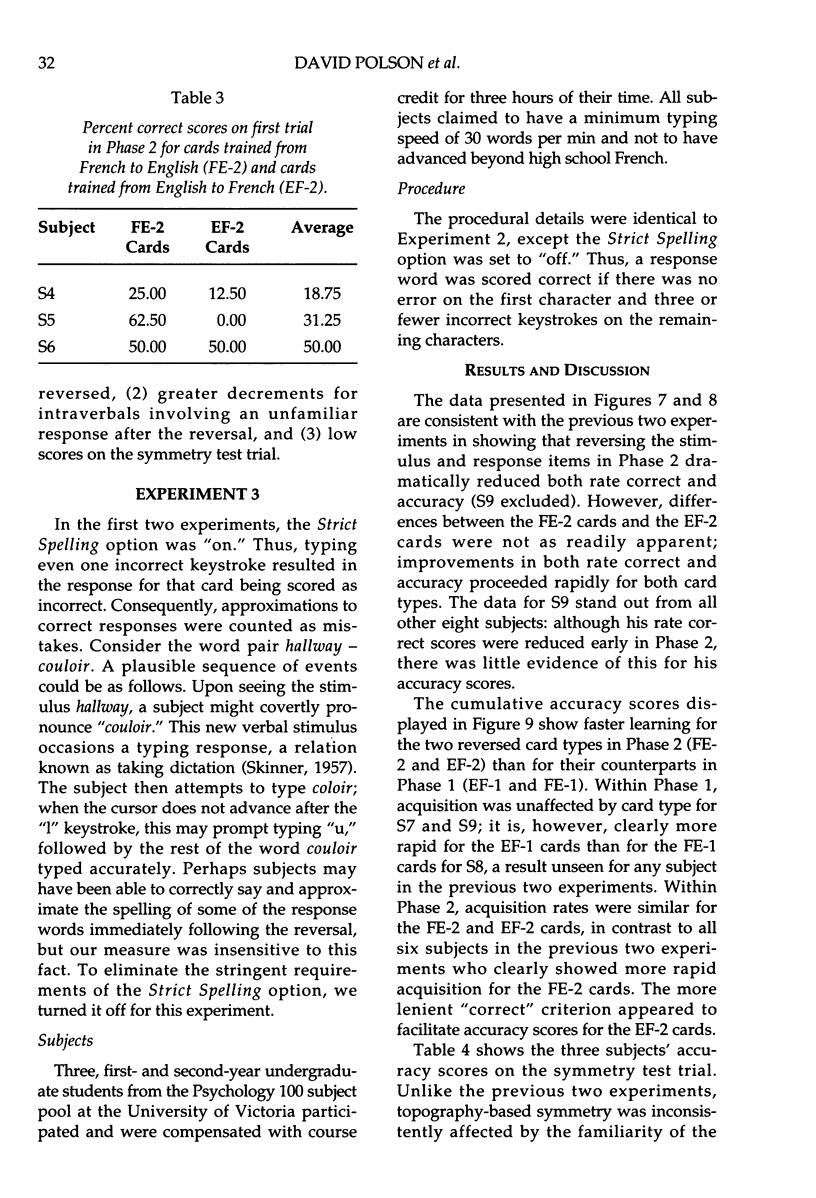

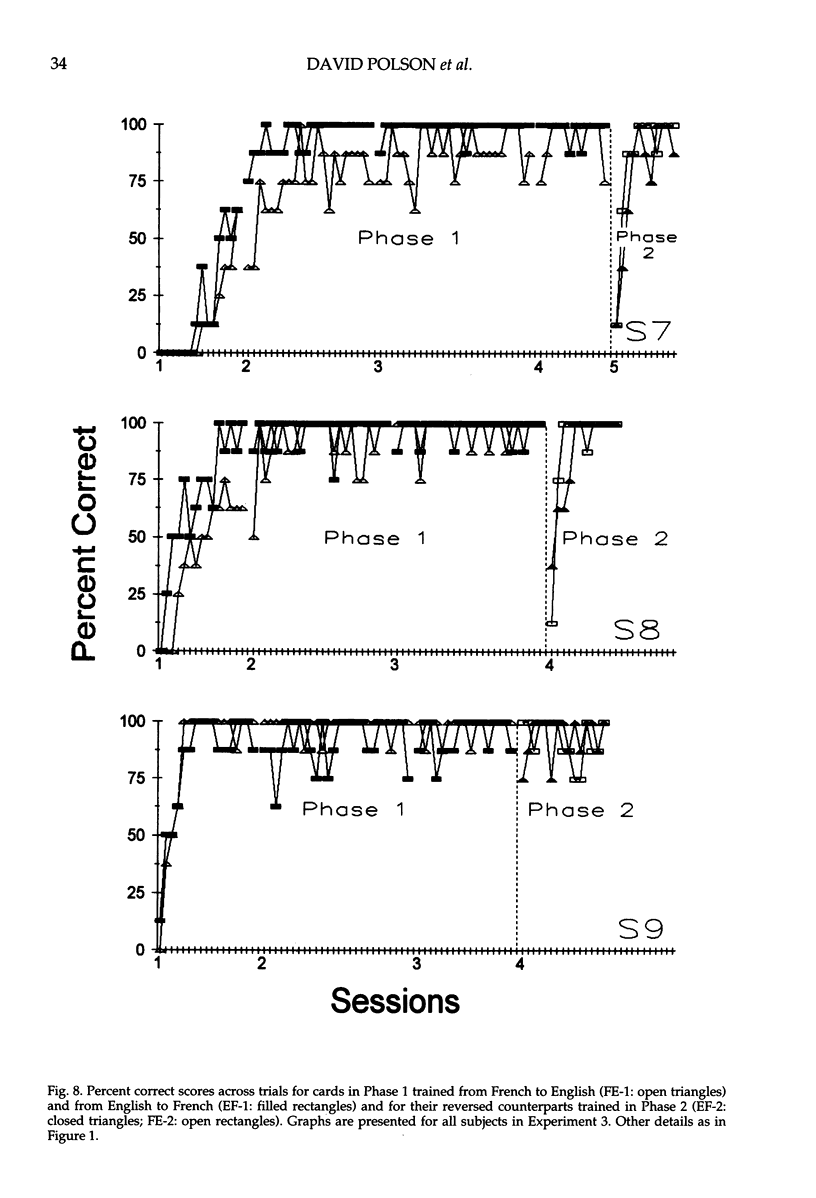
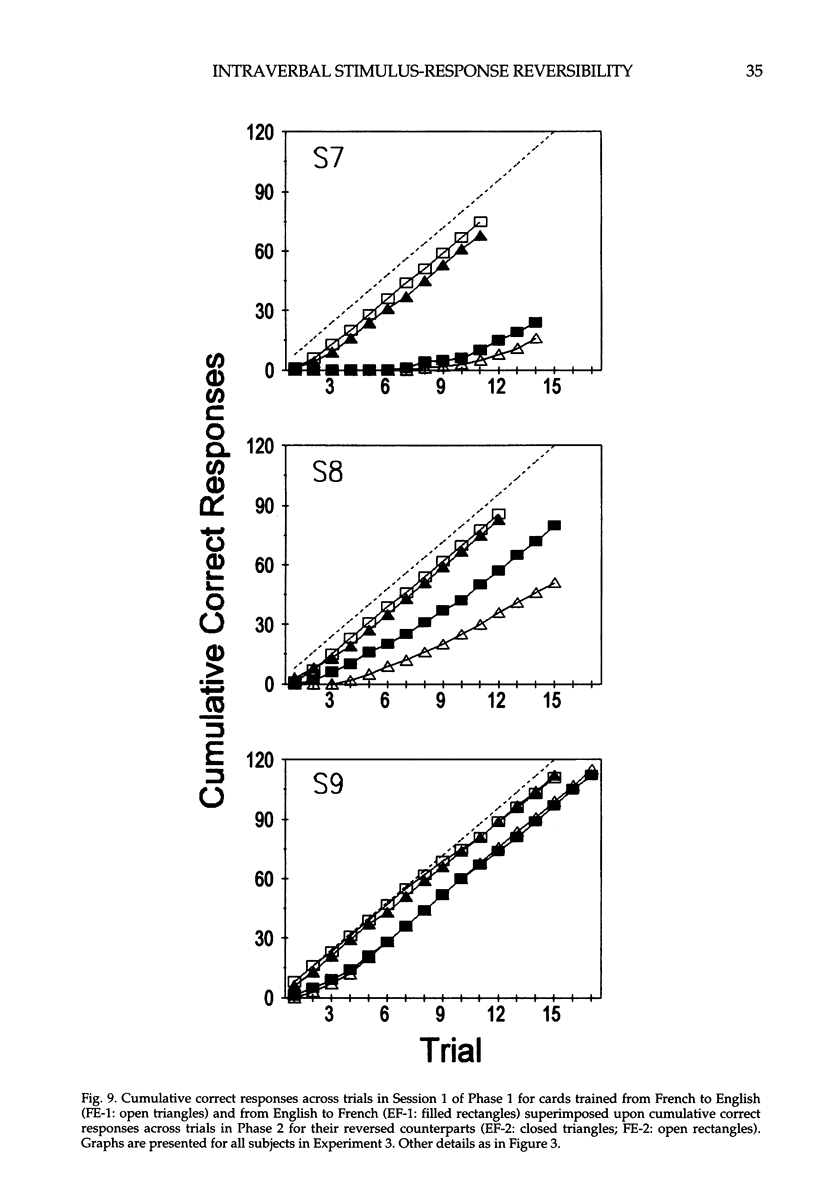
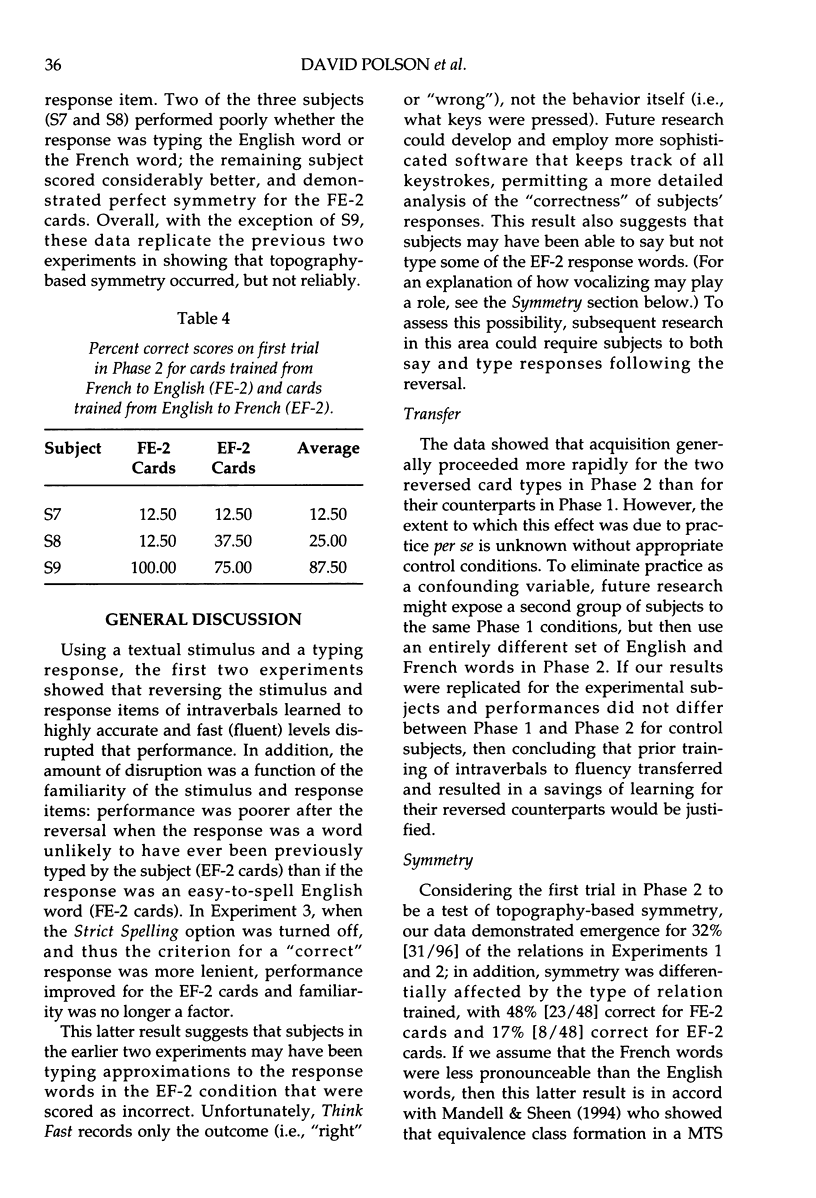
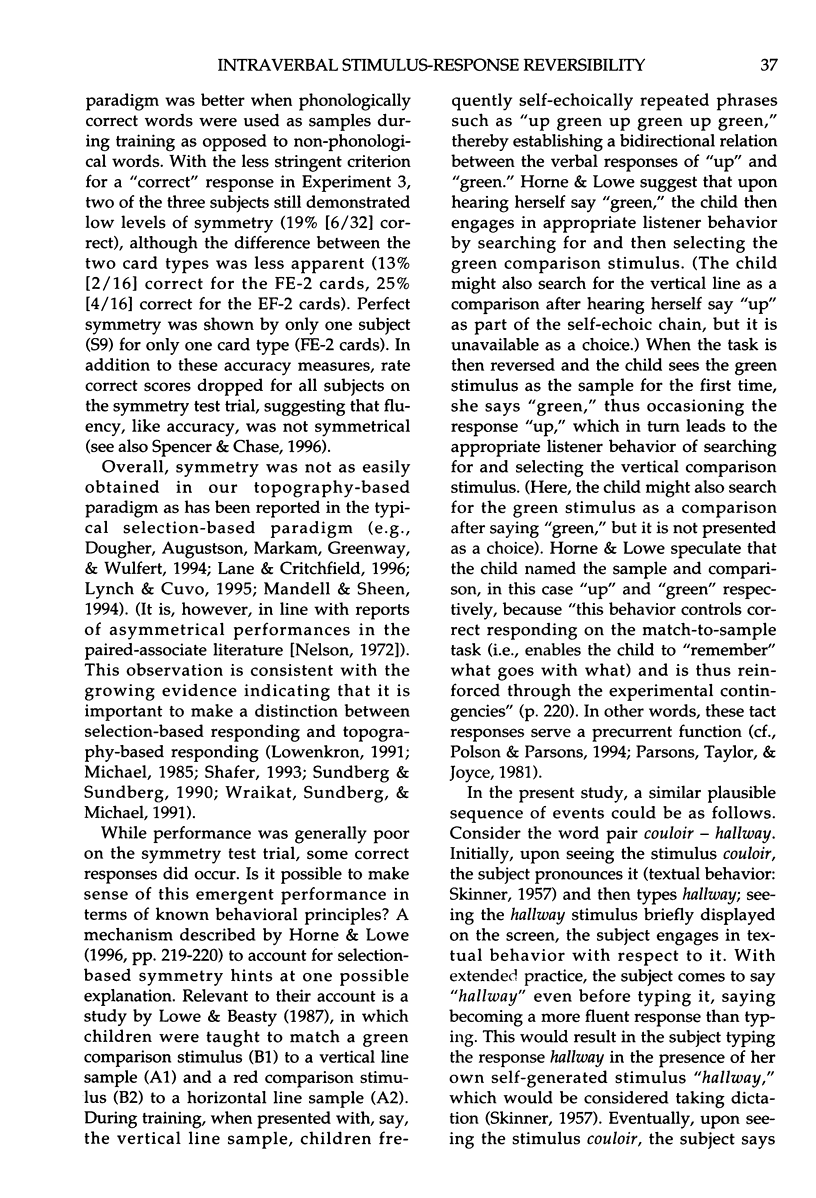
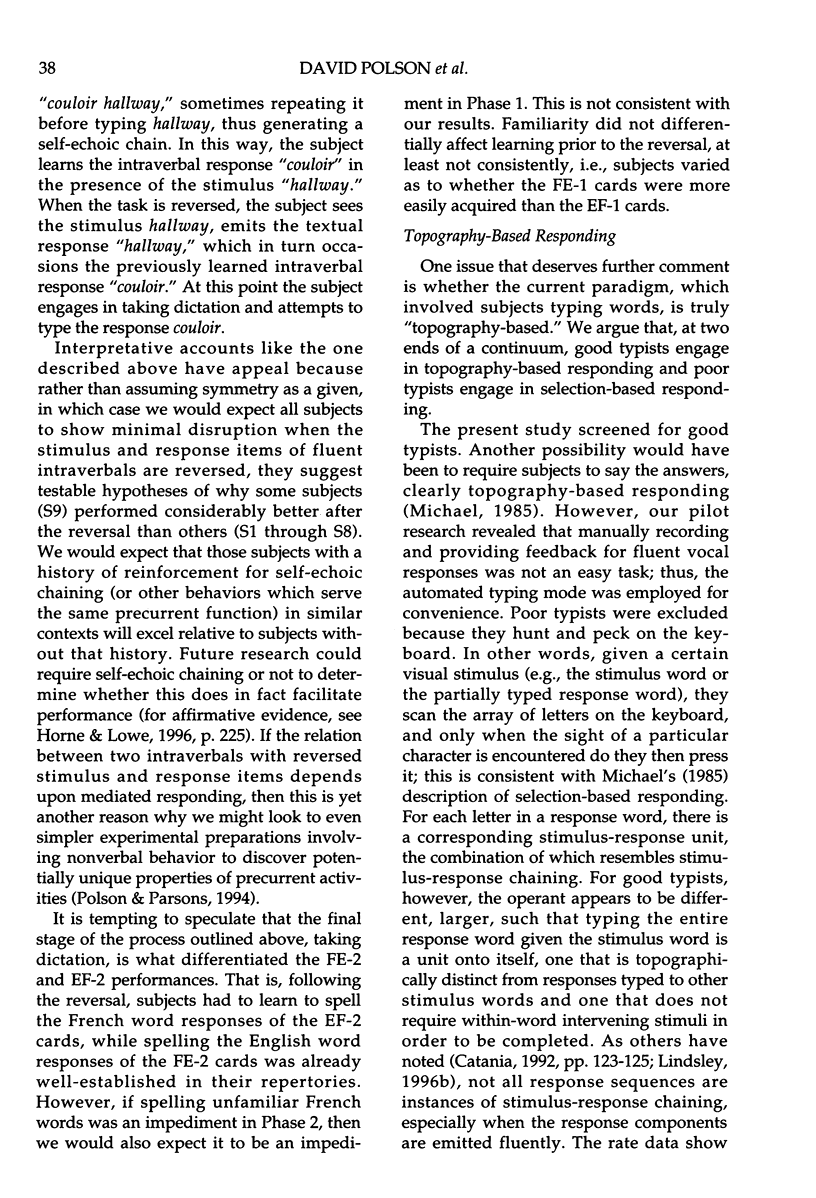
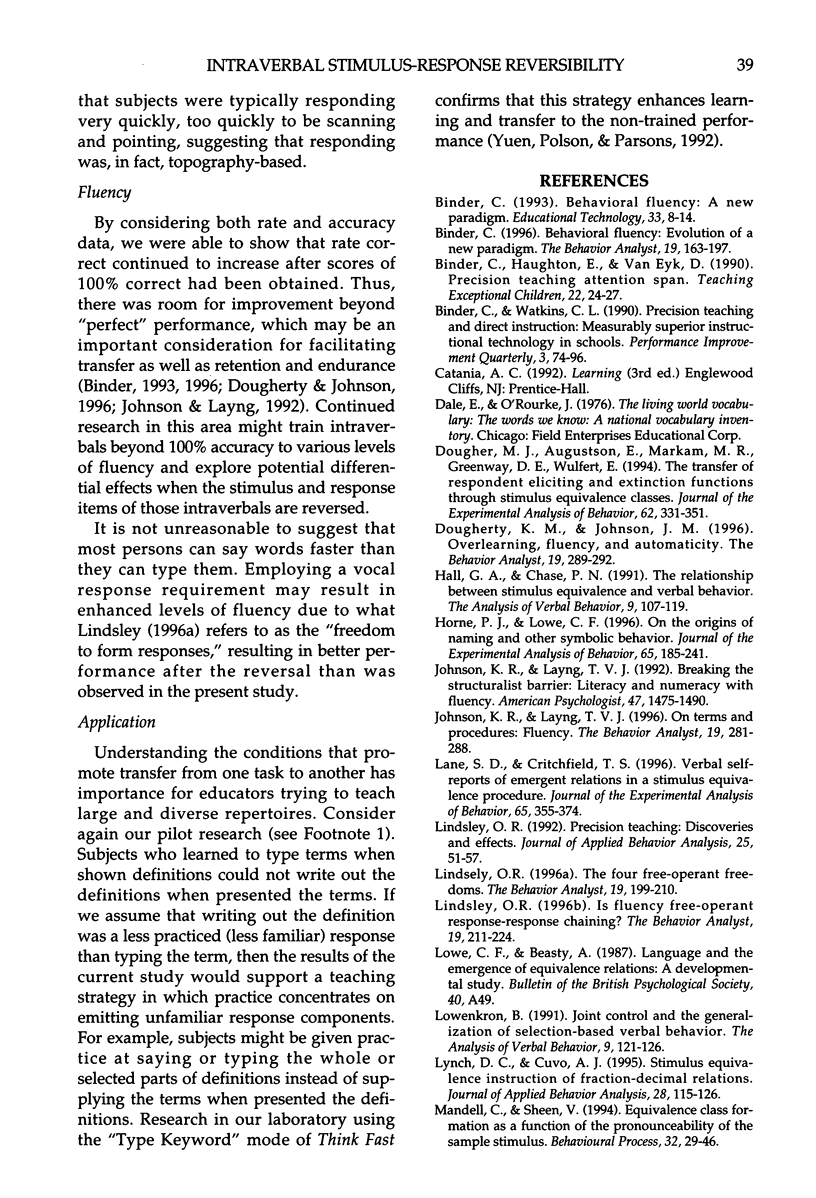
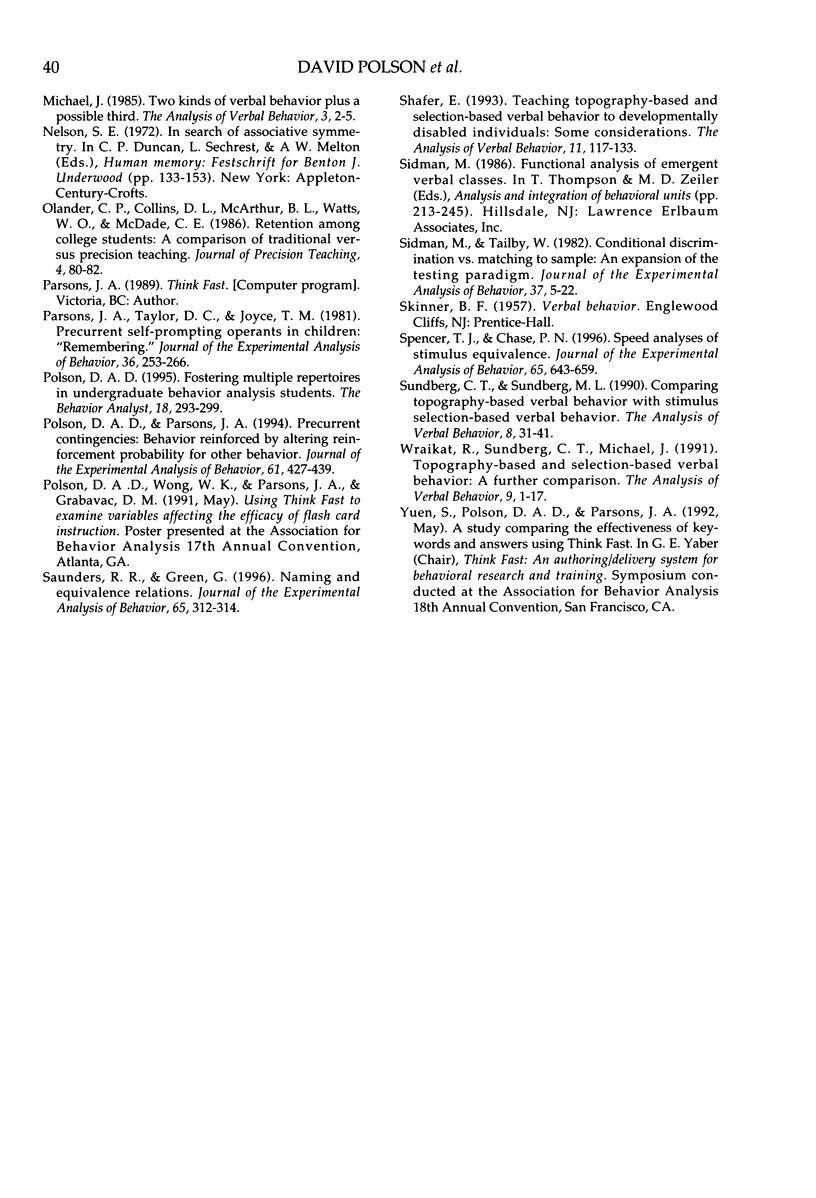
Selected References
These references are in PubMed. This may not be the complete list of references from this article.
- Binder C. Behavioral fluency: Evolution of a new paradigm. Behav Anal. 1996 Fall;19(2):163–197. doi: 10.1007/BF03393163. [DOI] [PMC free article] [PubMed] [Google Scholar]
- Collins D. W., Lange R. S. Medical-legal nurse consulting: patient advocacy in the new era of professionalism. Revolution. 1994 Winter;4(4):80–82. [PubMed] [Google Scholar]
- Dougher M. J., Augustson E., Markham M. R., Greenway D. E., Wulfert E. The transfer of respondent eliciting and extinction functions through stimulus equivalence classes. J Exp Anal Behav. 1994 Nov;62(3):331–351. doi: 10.1901/jeab.1994.62-331. [DOI] [PMC free article] [PubMed] [Google Scholar]
- Dougherty K. M., Johnston J. M. Overlearning, fluency, and automaticity. Behav Anal. 1996 Fall;19(2):289–292. doi: 10.1007/BF03393171. [DOI] [PMC free article] [PubMed] [Google Scholar]
- Horne P. J., Lowe C. F. On the origins of naming and other symbolic behavior. J Exp Anal Behav. 1996 Jan;65(1):185–241. doi: 10.1901/jeab.1996.65-185. [DOI] [PMC free article] [PubMed] [Google Scholar]
- Johnson K. R., Layng T. V. Breaking the structuralist barrier. Literacy and numeracy with fluency. Am Psychol. 1992 Nov;47(11):1475–1490. doi: 10.1037//0003-066x.47.11.1475. [DOI] [PubMed] [Google Scholar]
- Johnson K. R., Layng T. V. On terms and procedures: Fluency. Behav Anal. 1996 Fall;19(2):281–288. doi: 10.1007/BF03393170. [DOI] [PMC free article] [PubMed] [Google Scholar]
- Lane S. D., Critchfield T. S. Verbal self-reports of emergent relations in a stimulus equivalence procedure. J Exp Anal Behav. 1996 Mar;65(2):355–374. doi: 10.1901/jeab.1996.65-355. [DOI] [PMC free article] [PubMed] [Google Scholar]
- Lindsley O. R. Is fluency free-operant response-response chaining? Behav Anal. 1996 Fall;19(2):211–224. doi: 10.1007/BF03393165. [DOI] [PMC free article] [PubMed] [Google Scholar]
- Lindsley O. R. Precision teaching: Discoveries and effects. J Appl Behav Anal. 1992 Spring;25(1):51–57. doi: 10.1901/jaba.1992.25-51. [DOI] [PMC free article] [PubMed] [Google Scholar]
- Lindsley O. R. The four free-operant freedoms. Behav Anal. 1996 Fall;19(2):199–210. doi: 10.1007/BF03393164. [DOI] [PMC free article] [PubMed] [Google Scholar]
- Lynch D. C., Cuvo A. J. Stimulus equivalence instruction of fraction-decimal relations. J Appl Behav Anal. 1995 Summer;28(2):115–126. doi: 10.1901/jaba.1995.28-115. [DOI] [PMC free article] [PubMed] [Google Scholar]
- Parsons J. A., Taylor D. C., Joyce T. M. Precurrent self-prompting operants in children: "Remembering". J Exp Anal Behav. 1981 Sep;36(2):253–266. doi: 10.1901/jeab.1981.36-253. [DOI] [PMC free article] [PubMed] [Google Scholar]
- Polson D. A. Fostering multiple repertoires in undergraduate behavior analysis students. Behav Anal. 1995 Fall;18(2):293–299. doi: 10.1007/BF03392716. [DOI] [PMC free article] [PubMed] [Google Scholar]
- Polson D. A., Parsons J. A. Precurrent contingencies: Behavior reinforced by altering reinforcement probability for other behavior. J Exp Anal Behav. 1994 May;61(3):427–439. doi: 10.1901/jeab.1994.61-427. [DOI] [PMC free article] [PubMed] [Google Scholar]
- Saunders R. R., Green G. Naming is not (necessary for) stimulus equivalence. J Exp Anal Behav. 1996 Jan;65(1):312–314. doi: 10.1901/jeab.1996.65-312. [DOI] [PMC free article] [PubMed] [Google Scholar]
- Sidman M., Tailby W. Conditional discrimination vs. matching to sample: an expansion of the testing paradigm. J Exp Anal Behav. 1982 Jan;37(1):5–22. doi: 10.1901/jeab.1982.37-5. [DOI] [PMC free article] [PubMed] [Google Scholar]
- Spencer T. J., Chase P. N. Speed analyses of stimulus equivalence. J Exp Anal Behav. 1996 May;65(3):643–659. doi: 10.1901/jeab.1996.65-643. [DOI] [PMC free article] [PubMed] [Google Scholar]


